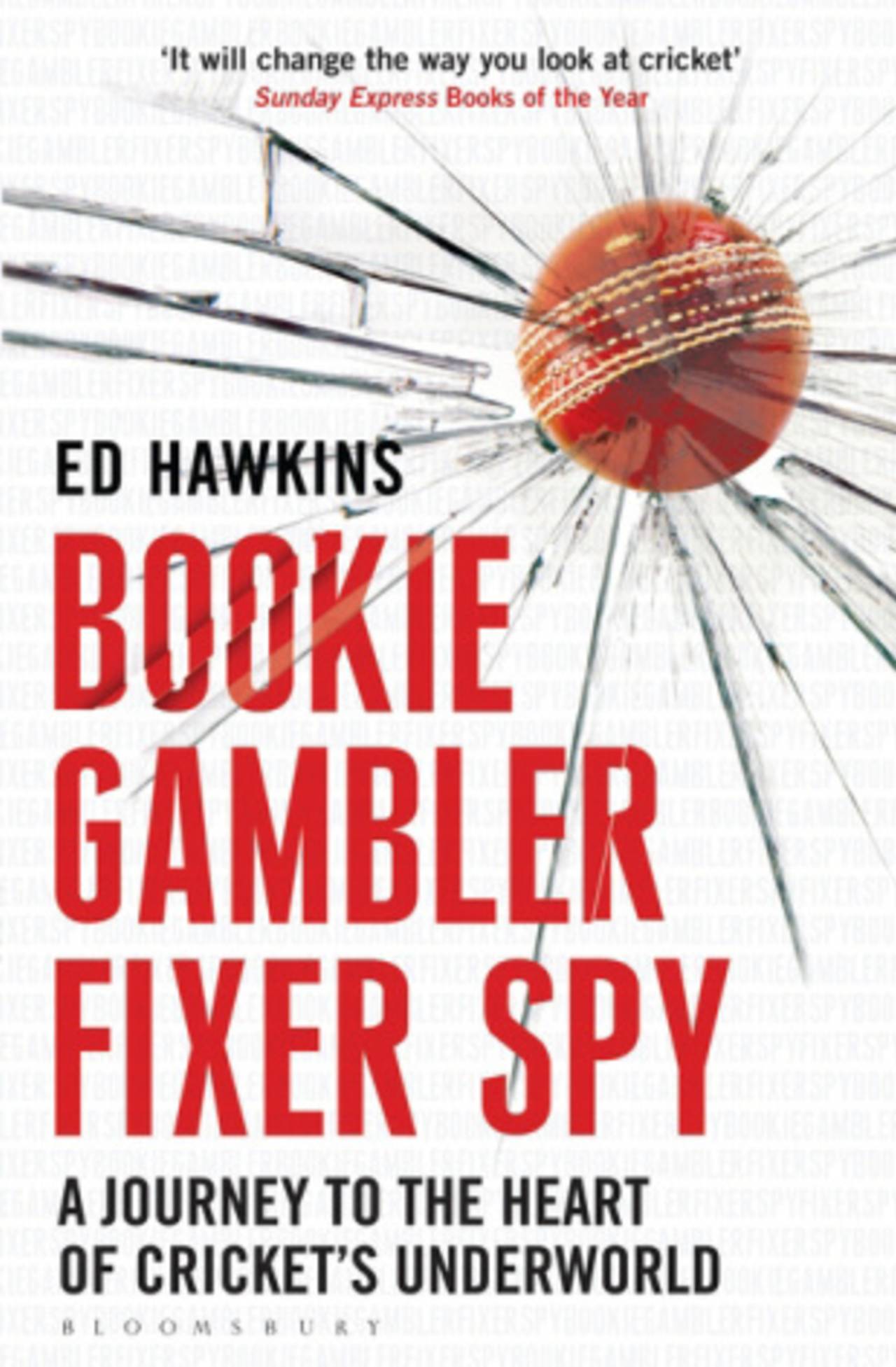The ugliness beneath cricket's skin
A clear-eyed, well-researched account of the ecosystem of gambling, betting, and "approaching" that operates alongside professional cricket
Sharda Ugra
21-Jul-2013

Bloomsbury
At the start of the last chapter of Bookie Gambler Fixer Spy, Ed Hawkins writes, "with every step… on the long trip to cricket's corrupt core, my confidence in the sport eroded… It has now ceased to be." He signs off with a final paragraph that begins, "The pessimist that I have become will never truly believe the game is pure. It cannot be."
It is a deadening and soul-numbing conclusion, but at the end of the book's 200-odd pages, no other can be arrived it. Only those suffering from delusions could possibly toss the book aside and hang on to the notion that cricket lives and operates in an exalted realm of "purity of spirit".
Bookie Gambler Fixer Spy names no names, though Hawkins says as many as 45 international and domestic cricketers "have been mentioned to me as being up to no good". In some parts of the book, certain names are XXXX-ed out, protecting Hawkins from being libellous, but at the end of it, the disguised identities somehow do not matter. This is not a book about selective naming and shaming. It is more a clear-eyed account about an entire ecosystem of gambling, betting, and "approaching" that operates alongside and beneath professional cricket. And about why it cannot be stopped.
Hawkins, whose twitter handle is @cricketbetting, is an award-winning journalist specialising in the sports-betting business. His research for this book has been exhaustive and impressive: he spent months interacting with an entire cast of characters - "first-tier" bookies, syndicate bosses, punters, cricket officials, ICC anti-corruption officers, and men from an Indian government agency who carried out investigations into match-fixing in 2000.
Bookie Gambler Fixer Spy explains in clear terms, particularly for the non-punting type, the illegal betting mafia, its methods, its cast of characters and the force and weight of its finances. Indian cricket's financial strength is not merely centred around broadcasting deals and a cash-rich board. There is another rolling, surging revenue stream that oils the moving parts of the game's betting industry, both legal and illegal, and it is driven by Indian bookies and punters.
Full of incident and detail, the book shows us that far from being a shady cloak-and-dagger business, cricket betting in India is run by a well-organised network of around 100,000 bookies who operate on cash transactions through trust. Bets can be placed on four "markets" essentially: overall match odds; the lambi (the innings-runs market, where punters are given a spread of innings runs that they can bet under or over); brackets (or sessions betting around the scoring of runs over ten-over chunks); and the "lunch favourite", which are Test match lunch scores or innings-breaks scores in ODIs. The punter and the bookie are constantly in a tussle with each other over any extra piece of information pertaining to weather, injury, and team composition.
Perhaps the most fascinating detail in the book is the manner in which Indian bookie can exert influence by "moving" or manipulating the odds, even on legitimate betting websites. A single text message from a bookie to his customers has the market load itself with Indian gambling money, and can turn the odds the way the bookie wants. Hawkins writes, "At the click of [his] fingers, the Indian bookmaker dictates to the rest of the world. It is not a delicate alchemy. It is not done through smoke and mirrors. It is sheer weight of money. A controlled landslide."
The match that sparked Hawkins' interest in getting to the heart of "cricket's underworld" was a knockout in the 2011 ICC World Cup. During the game, he received - as it must be said did dozens of people - a text from an Indian bookie known to him, who "predicted" the course of the game. The ICC called the claim spurious, and every time Hawkins tried to find out more about the game through his bookie contacts, even those who had shared much about their trade, he was met with a dead bat; the topic was always changed. The ominous enforcer of the silence was understood to be the organised D-company, or the Dawood Ibrahim gang. At one stage a bookie says, "D-Company has given bookmakers a bad name… We are the fair people. It is wrong to say bookmakers make the threats." It would be comic if it didn't sound so sincere; Bookie, Gambler, Fixer, Spy is full of the most bizarre but completely believable conversations that do happen around cricket.
Even when trying to confirm a genuine fix, Hawkins retains a healthy dose of scepticism when it comes to the biggest gamblers boasting about what they control. The News of The World "no-ball" fix was merely Mazhar Majeed trying to display his influence, it turns out - no bookmaker, even in India's illegal industry, takes bets on no-balls.
Hawkins proves that cricket's corruption need not touch every single player, but that it does permeate many layers. Fixes exists, more in domestic games like county cricket and the IPL - too many matches, too many players. They mark a key step in the tug of war for inside information, and the advent of pre-scripted passages of play that move match odds in either the bookie's or the punter's favour, rather than only dictating the result of a game.
Every cricket fan should read Bookie Gambler Fixer Spy to get a grasp of reality. Cricket is a game of much beauty but we must accept that it co-exists with what looks like an indestructible ugliness.
Bookie Gambler Fixer Spy: A Journey to the Heart of Cricket's Underworld
by Ed Hawkins
Bloomsbury 2012
232 pages. £8.99

by Ed Hawkins
Bloomsbury 2012
232 pages. £8.99

Sharda Ugra is senior editor at ESPNcricinfo